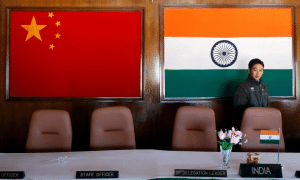PNN – Relations between Washington and New Delhi have become extremely tense after the Donald Trump administration threatened to increase tariffs on Indian goods by 50% due to the country’s oil imports from Russia, while at the same time, talks between China and India have accelerated to reduce tensions and strengthen bilateral relations.
According to the report of Pakistan News Network, citing the New York Times, relations between Washington and New Delhi have been strained since the Trump administration threatened earlier this month to raise tariffs on Indian goods by a whopping 50 percent, citing India’s imports of Russian oil.
The sudden rift threatens years of growing cooperation between the United States and India in areas such as security and technology, which was largely driven by a shared desire to contain China’s ambitions.
It has also accelerated the easing of tensions between China and India. This improvement began in earnest last October, when Chinese President Xi Jinping met with Indian Prime Minister Narendra Modi at the BRICS summit in Kazan, Russia. Since then, officials from the two countries have increased their official exchanges and discussed reducing trade barriers.
The breakdown in political trust between New Delhi and Washington is playing into Beijing’s hands, said Manoj Kvalramani, head of Indo-Pacific studies at the Takshashila Institute in Bangalore, India.
There are certainly still many issues that separate the two Asian giants. These include control of their 3,300-kilometer shared border, China’s proximity to Pakistan, and India’s ambitions to attract multinational manufacturers that have been trying to reduce their dependence on China.
However, the two sides have recently agreed to ease travel visa restrictions, work to resume direct flights, allow Indian pilgrims to visit Tibetan holy sites and negotiate the reopening of three trading posts along the mountainous border.

Chinese Foreign Minister Wang Yi will also travel to India for the latest round of border talks, and Modi will visit the country for the first time in seven years to attend a regional security summit in the northeastern Chinese city of Tianjin, where Xi and Russian President Vladimir Putin will also be present.
Vijay Gokhale, former Indian ambassador to Beijing, wrote in an article in the Times of India that China and India still have many divergent interests, but China, as a source of capital and technology, is a balancing factor against “Trumpian disorder” for India and other developing countries.
Among the divergent interests are China’s border reinforcement, influence across the Indian Ocean, and New Delhi’s presence in the Quad group (a formation to counter China).
Chinese state media has been relatively happy about the tensions between the US and India. The Global Times, a Communist Party newspaper, saw Modi’s upcoming visit to China as a sign that Washington has failed to win over New Delhi to its strategy to “contain” Beijing. The newspaper wrote: China and India are neighbors and the list of areas in which they can cooperate is long.
Lin Minwang, an expert on China’s relations with South Asia at Fudan University in Shanghai, said Beijing welcomes India’s efforts to improve its relations with China. However, China will not compromise on its national interests, such as close support for Pakistan.

